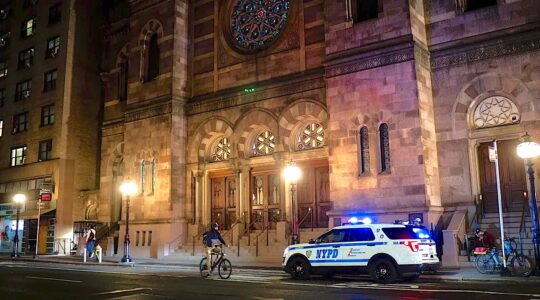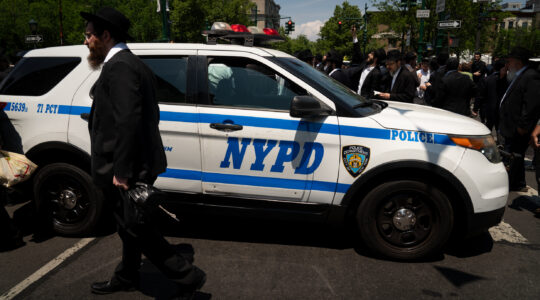The biggest surprise about New Zealand’s South Island is that there’s so much to do there.
Honestly, it surprised me. New Zealand has a reputation as a land of sheep, mountains and little else when Peter Jackson and his Hobbit hordes aren’t filming. The capital, Auckland, is on the North Island, as is Wellington, site of a large Jewish community.
But there’s a reason I put the South Island on my top destinations for 2013 — or rather, dozens of reasons. Among these are mountain fjords, glaciers, arts colonies, the world’s southernmost synagogue, and some of the best kosher wine anywhere.
The number of things you can do is only limited by your energy level and your budget. Ideally, you catch a ferry from the North Island, and then wend south from the wine country to the fjords. (This option is for those with both the time and the nerves to drive on the left.)
Alternatively, a handy network of internal airports makes it possible to cover the island’s highlights in just a few days, with daytrips by bus to the most-enticing villages.
Quirky Nelson, an artsy, gallery-filled town surrounded by golden beaches and lush green hills, is a popular starting point for those working their way south. The highlights of this area are New Zealand’s best, California-like climate, and the resulting wine — specifically the crisp, fruity sauvignon blancs and chardonnays that have brought international renown to the Marlborough region. O’Dwyers Creek Vineyard is the only Marlborough vineyard producing OU-certified kosher wine (it also carries the NZ Kosher Kiwi hechsher labels).
Proper and British in feel, with brick and gray-stone buildings, your next logical stop is Christchurch. The city has not only strong traditions of Christian (obviously) and Jewish worship, but also of an easygoing, typically Oceanic ethnic tolerance, which extends to indigenous Maori culture.
You can still feel the impact of several devastating recent earthquakes, but the region has largely rebuilt. Construction is still underway at Beth-El, the Canterbury Hebrew Congregation, whose building was destroyed, though twice-monthly Reform services carry on.
The Congregation was founded by Jewish newcomers in the mid-19th century and flourished through successive decades of gold rush, immigration from the Middle East and Europe, and more recent arrivals from Israel and South Africa. An estimate done several years ago put the local Jewish community at more than 650 members, a small but cosmopolitan group.
Christchurch is a favorite home base for daytrips to the South Island’s lovely, historic villages: Kaikoura, a coastal spot famous for its whale-watching, and Akaroa, a harbor-side town with a distinctive French flavor.
It’s easy to fly from Christchurch to Queensland, gateway to the fjords of the far south. Many get waylaid amid the sports mania that pervades this mountain resort, which sits on the shores of a glacial lake.
Between the snowy peaks and the cutesy main streets, Queenstown can feel a vaguely Alpine, and it’s a worldwide magnet for adventure-seekers: snowboarders, bungee-jumpers, hang-gliders, mountain climbers, and the like.
Support the New York Jewish Week
Our nonprofit newsroom depends on readers like you. Make a donation now to support independent Jewish journalism in New York.
As bustling as Queenstown is, the landscape that awaits just to the west is almost eerily empty, remote and unspoiled. Past the sparsely unpopulated West Coast is Fiordland National Park, a Word Heritage Site on the far southwest corner of the South Island. New Zealand’s largest park features no fewer than 14 spectacular fjords, with well-designed hiking trails and a convenient smorgasbord of tour options.
“Sound” doesn’t really do this landscape justice for those whose reference point would be Long Island. Instead, these glacier-carved sounds are watery fjords shimmering amid mossy-green walls that rise thousands of feet, crowned by snowy peaks.
Milford Sound is the best known and most touristy of the sounds, but there is plenty of wilderness for those willing to hike, cruise, kayak and generally roam this awesome landscape. Cruises frequently stop at the deliciously named Doubtful Sound, which may have seemed apt to the first explorers lost amid these silent, towering cliffs.
Cross the island’s southern mountains and you land amid the green hills of Dunedin, site of Earth’s southernmost synagogue.
Founded by Scots, Dunedin was New Zealand’s biggest city during the late-19th-century gold rush; it’s still referred to as Edinburgh South for its lingering Scottish aura. You can feel the old country in Dunedin’s place names, in the Gaelic fiddle music ringing from its downtown pubs, and in the Gothic arches of the campus of Otago University, which looks like Aberdeen — but with sun.
A lively student city, Dunedin is a fun place to recharge after the fjords and wilderness. Streets of pretty Victorian buildings, especially the lacy railway station, lend a striking visual character.
The circa-1846 synagogue exemplifies the era’s frothy visual tendencies, though it long since ceased to house a congregation; most recently, it has served as an art gallery, apartment house and mecca for synagogue historians.
That may disappoint those looking for a minyan. But with sandy beaches beckoning in February and dormant volcanoes hovering nearby, the temple-cum-gallery fits right into this eclectic corner of Oceania.
The New York Jewish Week brings you the stories behind the headlines, keeping you connected to Jewish life in New York. Help sustain the reporting you trust by donating today.




